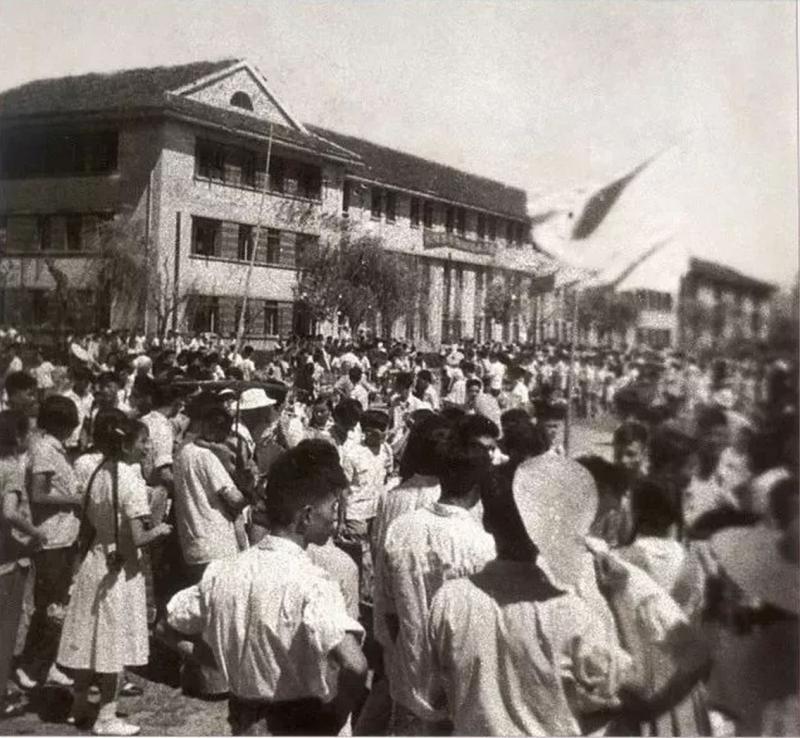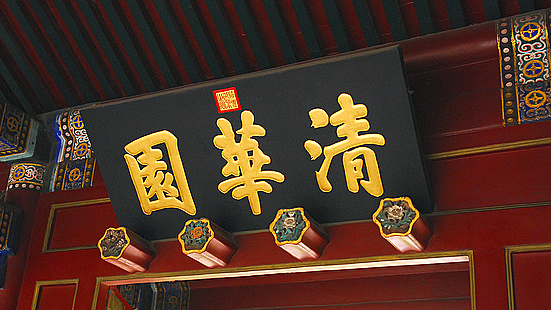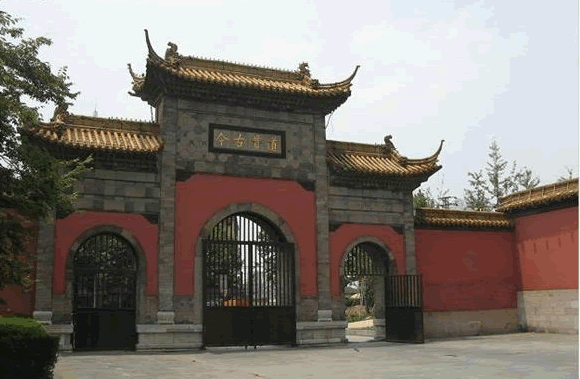|
China Open Resources For Education
The China Open Resources for Education, or CORE, was a non-profit organization that promoted closer interaction and open sharing of educational resources between Chinese and international universities. Its website is offline since 2013. Overview CORE was established in November 2003 following an MIT OpenCourseWare Conference in Beijing. CORE was a consortium of universities that began with 26 IET Educational Foundation member universities and 44 China Radio and TV Universities, with a total enrollment of 5 million students. It aimed to provide Chinese universities with free and easy access to global open educational resources and provides the framework for Chinese-speaking universities to participate in the shared, global network of advanced courseware with MIT and other leading universities. Lead universities *Beijing Jiaotong University *Central South University *Dalian University of Technology *Harbin Institute of Technology *Nanjing University *Peking University *Shanghai ... [...More Info...] [...Related Items...] OR: [Wikipedia] [Google] [Baidu] |
Non-profit Organization
A nonprofit organization (NPO) or non-profit organisation, also known as a non-business entity, not-for-profit organization, or nonprofit institution, is a legal entity organized and operated for a collective, public or social benefit, in contrast with an entity that operates as a business aiming to generate a profit for its owners. A nonprofit is subject to the non-distribution constraint: any revenues that exceed expenses must be committed to the organization's purpose, not taken by private parties. An array of organizations are nonprofit, including some political organizations, schools, business associations, churches, social clubs, and consumer cooperatives. Nonprofit entities may seek approval from governments to be tax-exempt, and some may also qualify to receive tax-deductible contributions, but an entity may incorporate as a nonprofit entity without securing tax-exempt status. Key aspects of nonprofits are accountability, trustworthiness, honesty, and openness to eve ... [...More Info...] [...Related Items...] OR: [Wikipedia] [Google] [Baidu] |
Peking University
Peking University (PKU; ) is a public research university in Beijing, China. The university is funded by the Ministry of Education. Peking University was established as the Imperial University of Peking in 1898 when it received its royal charter by the Guangxu Emperor. A successor of the older ''Guozijian'' Imperial College, the university's romanized name 'Peking' retains the older transliteration of 'Beijing' that has been superseded in most other contexts. Perennially ranked as one of the top academic institutions in China and the world; as of 2021 Peking University was ranked 16th globally and 1st in the Asia-Pacific & emerging countries by Times Higher Education, while as of 2022 it was ranked 12th globally and 1st in Asia by QS University Rankings. Throughout its history, Peking University has had an important role "at the center of major intellectual movements" in China. Abolished of its status as a royal institution after the fall of the Qing dynasty and the Xinhai R ... [...More Info...] [...Related Items...] OR: [Wikipedia] [Google] [Baidu] |
Tertiary Educational Websites
Tertiary ( ) is a widely used but obsolete term for the geologic period from 66 million to 2.6 million years ago. The period began with the demise of the non-avian dinosaurs in the Cretaceous–Paleogene extinction event, at the start of the Cenozoic Era, and extended to the beginning of the Quaternary glaciation at the end of the Pliocene Epoch. The time span covered by the Tertiary has no exact equivalent in the current geologic time system, but it is essentially the merged Paleogene and Neogene periods, which are informally called the Early Tertiary and the Late Tertiary, respectively. The Tertiary established the Antarctic as an icy island continent. Historical use of the term The term Tertiary was first used by Giovanni Arduino during the mid-18th century. He classified geologic time into primitive (or primary), secondary, and tertiary periods based on observations of geology in Northern Italy. Later a fourth period, the Quaternary, was applied. In the early deve ... [...More Info...] [...Related Items...] OR: [Wikipedia] [Google] [Baidu] |
Higher Education In China
Higher education in China is the largest in the world. By the end of 2021, there were over 3,000 colleges and universities, with over 44.3 million students enrolled in mainland China and 240 million Chinese citizens having received high education. The system includes Bachelors, Masters and Doctoral degrees, as well as non-degree programs, and is also open to foreign students. The Ministry of Education of the People's Republic of China is the government authority for all matters pertaining to education and language. The ministry notes that higher education in China has played a significant part in economic growth, scientific progress and social development in the country "by bringing up large scale of advanced talents and experts for the construction of socialist modernization."Ministry of Education of the People's Republic of ChinaHigher Education in China. Beijing, PRC. China is also a major destination for international students, being the most popular country in Asia for in ... [...More Info...] [...Related Items...] OR: [Wikipedia] [Google] [Baidu] |
Open University Of China
The Open University of China () was established in Beijing in 1979. It formerly known as China Central Radio and TV University (中央广播电视大学 or 中央电大), which reflects its heritage of providing a system of higher education through radio and television. The university is directly under the supervision of the Ministry of Education. The current president is Dr. Ge Daokai, Sun Lüyi, Li Linshu and Yan Bing are vice presidents, and Zhang Hui is party secretary of the university. Currently, most courses are blended between face-to-face sessions and online/distance learning. It operates through 44 provincial radio and television universities (PTVUs), 279 prefectural/civic branch schools and 625 district/county work stations. The RTVU system employs nearly 85,000 staffs (including 52,600 full-time staffs). ref>http://unesdoc.unesco.org/images/0014/001412/141218e.pdf#85 It offers 75 majors in 9 disciplines and 24 specialties including science, engineering, agricultural ... [...More Info...] [...Related Items...] OR: [Wikipedia] [Google] [Baidu] |
Xi'an Jiaotong University
Xi'an Jiaotong University (XJTU, ) is a public research university in Xi'an, Shaanxi, China. As a member of Double First Class University Plan, C9 League, Project 985, and Project 211, it is a leading national university with special strengths in engineering, technology, applied economics, management, and life sciences. It is designated a Class A Double First Class University by the Ministry of Education. XJTU's twenty schools comprise a highly comprehensive university offering programs that cover all academic disciplines. XJTU houses five state key laboratories, four state special laboratories, and two state engineering research centers. Two of its eight affiliated teaching hospitals are ranked among China's top 100 hospitals. It is the hub of the University Alliance of the Silk Road, an international academic alliance under the umbrella of the China's Belt and Road Initiative that aims to build educational collaboration and fuel economic growth in countries along the Silk Ro ... [...More Info...] [...Related Items...] OR: [Wikipedia] [Google] [Baidu] |
Tsinghua University
Tsinghua University (; abbreviation, abbr. THU) is a National university, national Public university, public research university in Beijing, China. The university is funded by the Ministry of Education of the People's Republic of China, Ministry of Education. The university is a member of the C9 League, Double First Class University Plan, Project 985, and Project 211. Since its establishment in 1911, it has produced many notable leaders in science, engineering, politics, business, academia, and culture. As of 2022, Tsinghua University ranked 14th in the world by the 2023 QS World University Rankings and 16th globally by the 2022 ''Times Higher Education World University Rankings''. In 2021, Tsinghua ranked first in the Asia-Pacific region by ''Times Higher Education World University Rankings#Asia, THE Asia University Rankings'' and the U.S. News & World Report Best Global Universities Ranking, ''U.S. News & World Report''. History Early 20th century (1911–1949) ... [...More Info...] [...Related Items...] OR: [Wikipedia] [Google] [Baidu] |
Sichuan University
Sichuan University (SCU) is a National university, national National Key Universities, key public university, public research university in Chengdu, Sichuan, China. The university is wholly funded by Ministry of Education of the People's Republic of China, the Ministry of Education. SCU is one of the top universities of China, and a Class A Double First Class University Plan, Double First Class University. It is a member of various education projects aiming at developing elite universities, including the Double First Class University Plan, the former Project 211, and the former Project 985. The current Sichuan University results from the merger of three institutions in 1994: the former Sichuan University, the Chengdu University of Science and Technology (CUST) and the West China University of Medical Sciences (WCUMS). History Sichuan University is one of the earliest institutions of higher education in China. Its earliest predecessor was the Sichuan Chinese and Western Scho ... [...More Info...] [...Related Items...] OR: [Wikipedia] [Google] [Baidu] |
Shanghai Jiaotong University
Shanghai Jiao Tong University (SJTU; ) is a public research university in Shanghai, China. The university is funded by the Ministry of Education of China. The university was established on April 8, 1896 as Nanyang Public School (南洋公學) by an imperial edict. The university is a member of the C9 League, Double First Class University Plan, Project 985, and Project 211. The university underwent a number of reformations and gained its current name in 1959. Shanghai Second Medical University was merged into the university on July 18, 2005. Name The word "Jiao Tong" (), or historically, "Chiao Tung", means transportation or communication. It reflects the university's root — it was founded by the Ministry of Posts and Communications of the late Qing dynasty. Jiao Tong or Chiao Tung could be translated as transport but it also means "extending in all directions". Engineering and managerial sciences are major academic focuses at the various Jiaotong universities, but not ... [...More Info...] [...Related Items...] OR: [Wikipedia] [Google] [Baidu] |
Nanjing University
Nanjing University (NJU; ) is a national public research university in Nanjing, Jiangsu. It is a member of C9 League and a Class A Double First Class University designated by the Chinese central government. NJU has two main campuses: the Xianlin campus in the northeast of Nanjing, and the Gulou campus in the city center of Nanjing. Established in 1902 as Sanjiang Normal School, Nanjing University underwent a number of name changes, such as Nanjing Higher Normal School, National Southeastern University and National Central University, until it was renamed Nanjing University in 1950. It merged with the University of Nanking in 1952. NJU is perennially ranked one of the best research universities in China, and one of the most selective universities in the nation. As of 2022, Nanjing University ranked 7th in China and 95th globally by Times Higher Education World University Rankings. Regarding scientific research output, the Nature Index Annual Table 2022 ranked Nanjing Universit ... [...More Info...] [...Related Items...] OR: [Wikipedia] [Google] [Baidu] |
Open Educational Resources
Open educational resources (OER) are Instructional materials, teaching, learning, and research materials intentionally created and Free license, licensed to be free for the end user to own, share, and in most cases, modify. The term "OER" describes publicly accessible materials and resources for any user to use, re-mix, improve, and redistribute under some licenses. These are designed to reduce accessibility barriers by implementing best practices in teaching and to be adapted for local unique contexts.Mishra, M., Dash, M. K., Sudarsan, D., Santos, C. A. G., Mishra, S. K., Kar, D., ... & da Silva, R. M. (2022). Assessment of trend and current pattern of open educational resources: A bibliometric analysis. ''The Journal of Academic Librarianship'', ''48''(3), 102520. The development and promotion of open educational resources is often motivated by a desire to provide an alternative or enhanced educational paradigm. Definition and scope Open educational resources (OER) are part of ... [...More Info...] [...Related Items...] OR: [Wikipedia] [Google] [Baidu] |
Harbin Institute Of Technology
Harbin Institute of Technology (; abbreviation: HIT or ) is a public research university and a member of China's elite C9 League and a member of the University Alliance of the Silk Road. HIT is a Chinese Ministry of Education Class A Double First Class University. It has three campuses, spanning the country from north to south: the Harbin campus in Heilongjiang Province, the Weihai campus in Shandong Province and the Shenzhen campus in Guangdong Province. HIT is consistently ranked as one of the top universities in the country with a focus on science and engineering. HIT has been ranked in the top 10 Best Global Universities for Engineering by the U.S. News & World Report Best Global Universities Ranking since the ranking’s inception in 2014 by the US News & World Reports. As of 2022, it is ranked 5th globally. HIT is one of the only handful of universities in the world that have designed, built, and launched their own satellites and it excels at missile technology. ... [...More Info...] [...Related Items...] OR: [Wikipedia] [Google] [Baidu] |






